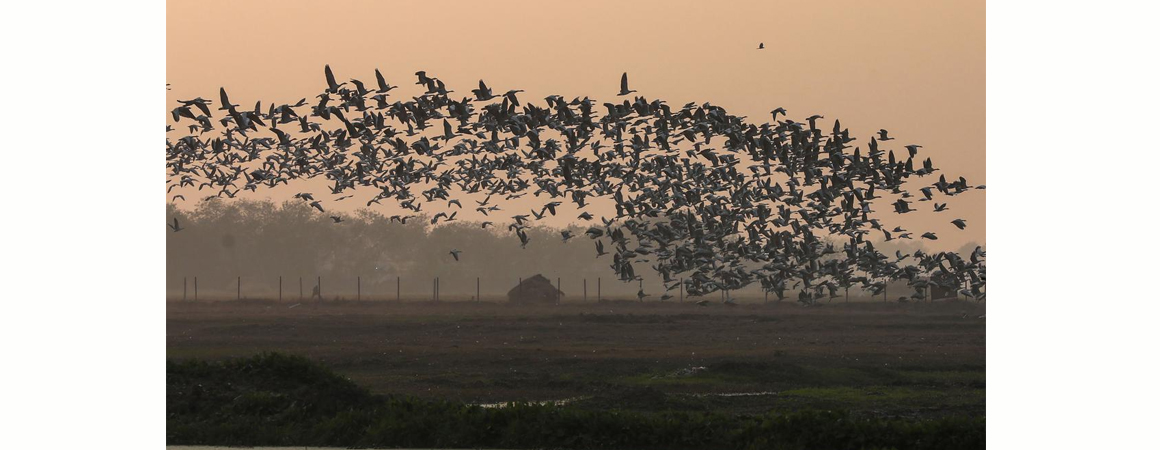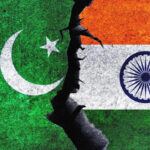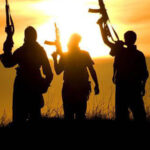Events may have caused an agreement to slip away, but the fact is that it is an idea that has stood the test of time, circumstances and radical shifts in the India-Pakistan equation
In a book completed shortly before his passing, former Special Envoy Satinder Lambah made several revelations about the India-Pakistan dialogue process he once squired. Lambah confirmed that the agreement on the Line of Control (LoC) in Kashmir, was indeed ready to be signed by then Prime Minister Manmohan Singh and Pakistan President General Musharraf. But the stand-off with the judiciary that erupted in Pakistan in 2007, and the Mumbai 26/11 attacks in 2008 came in the way, effectively shelving any plans to revive it.
A ‘normal border’
While the contours of the agreement (one that would seek “not to redraw borders, but make borders irrelevant”) have been recorded by Pakistani leaders including Gen. Musharraf (in his memoir, In The Line of Fire) and former Pakistan Foreign Minister Khurshid Mahmud Kasuri (in his insider account, Neither a Hawk Nor a Dove), there has only been a fleeting description in India thus far. Lambah first referred to the settlement publicly in 2014, while addressing a university audience in Srinagar, making it clear that India would never agree to giving away any territory. In his memoir, he expands on the agreement, drawing the progression of the original “4-point solution” to a “14-point set of guidelines” for any settlement between the two countries. The list that refers to a free flow of trade, ending cross-border terrorism, respect for human rights, and bringing down military presence (but not demilitarisation) on both sides of the LoC, hinges on one simple idea: that the “Line of Control has to be respected like a normal border between the two countries”. It is an idea that has stood the test of time, circumstances and radical shifts in the India-Pakistan equation.
A reality check is important before going any further in discussing the validity of that solution. Two decades after the process began, nearly everyone involved in the talks from 2003-2008 in India and Pakistan has either passed away, is out of power, or would find it politically inconvenient to discuss a resolution with the other side. A series of terror attacks, from Mumbai to Pathankot and Pulwama, have run a veto over any Indian initiative to restart dialogue, while the Narendra Modi government’s reorganisation of Jammu and Kashmir (J&K) in August 2019, and amendment to Article 370 have made it difficult for any Pakistani leader to propose a restoration of ties. As a result, the optics are grim for the two land neighbours: no political contact at any level, no trade, no direct travel links by air, road or rail, and no High Commissioners in each other’s countries. The present scenario, after the terror attack in Poonch this week, will no doubt rend relations further apart, just days before Pakistan Foreign Minister Bilawal Bhutto arrives in India for the Shanghai Cooperation Organisation’s Foreign Ministers Meeting, in Goa.
Seeking engagement
However, as the book records, no matter how much India-Pakistan ties rupture, the long arc of the relationship always veers towards engagement. Lambah recounts that it was not just six Prime Ministers he had worked with from 1984-2014 on Pakistan, but also the seventh leader, Prime Minister Narendra Modi, too, who continued to seek engagement with Islamabad even after the severe setback he received to his visit in December 2015. Within a week of his surprise trip to Lahore, terrorists attacked the Pathankot airbase (January 2016). Even so, just over a year later, in April 2017, Lambah writes that he was contacted by a “senior official of the Prime Minister’s Office” to ask him to travel to Pakistan to restart the back-channel process.
Regardless of the emissary used then (Lambah said he did not go, but that an Indian industrialist had arrived in Murree shortly after) the back-channel was put back in place. Believed to run between National Security Adviser Ajit Doval and the Pakistani intelligence, it focuses on preventing hostilities, as it did during the post-Balakot downing of an Indian air force pilot in Pakistan in 2019, the LoC ceasefire agreement of 2021, or the aftermath of a live missile accidentally launched into Pakistan by the Indian Air Force in March 2022.
The two sides have also reportedly discussed a sequence of responses that would lead back to quasi-normalcy-restoration of statehood and elections in J&K, the reappointment of High Commissioners and the restoration of visas and people-to-people ties. These would include initiatives such as the Kartarpur Corridor, with Home Minister Amit Shah hinting this month that a “Sharda Peeth Corridor” across to the temple in Pakistan-occupied Kashmir’s Neelum Valley is being thought of. The next step would be to revisit the nearly-ready agreement of 15 years ago, that Lambah writes, was legally vetted. One of the big changes from then to now was New Delhi’s moves on August 5, 2019 (revoking J&K’s special status and Statehood), which led Pakistan to snap trade and travel links and recall High Commissioners.
However, a more long-term view of the moves might find that they did not change the basis for a settlement of the J&K dispute. To begin with, Article 370, which was always a temporary provision, and diluted over the decades, was never recognised by Pakistan. The second move, on Article 35(A) redefining permanent residents of the State, has had little to no effect in changing demography thus far, and could only do so with consensus from every part of the erstwhile State. The third move, on gender parity in property inheritance, had already been implemented in 2002, when the J&K High Court ruled against the provision taking away property rights of women who married outside the State. The fourth, downgrading the State to a Union Territory will be reversed, according to the government, once elections are held.
More than the legal moves (that have changed little on the ground), is the focus on the means adopted to wrought those moves: unjust arrests and a continuing security crackdown on politicians and civil society, Internet bans and a stringent lockdown, and a targeting of journalists as well as human rights violations. Eventually, reversing these measures is part of any democracy’s contract with its people, and the longer New Delhi takes to ease restrictions on the Valley, the more elusive “normalcy” will be. Even more necessary is to end cross-border terrorism from Pakistan that the people of J&K, including the Kashmiri Pandit community, have suffered from for decades now, and not just since 2019.
The LAC is the bigger challenge
The truth is that despite the precariousness of the situation within J&K, the LoC has been more or less stable for more than half a century. Any military operation by either India or Pakistan to reclaim the other side is unlikely to make much headway, and would undoubtedly unravel more than just the boundary between them. While Pakistani politicians have been heavily opposed to accepting any “status quo” solution to Kashmir, Pakistan’s own internal crises (political and economic) ensure that it is on a weak wicket. It is the threat to India from China at the Line of Actual Control that is more likely to continue to be India’s bigger challenge; and as a result, India’s need for a more stable Line of Control grows (to avoid a two-front military engagement). Meanwhile, residents of J&K deserve a chance to prosper without the constant overhang of war and a proxy war between the two nuclear-armed neighbours. A bilateral agreement would also end the false hope of independence the residents of the Valley have been beguiled with for far too long. Revisiting the non-territorial near-agreement LoC of a decade-and-a-half ago is eventually the only way forward, regardless of how much time goes by, how much water flows in the Indus, or how many lives are lost before both sides deem it necessary to do so.
The LoC agreement of 2007 deserves a relook
Events may have caused an agreement to slip away, but the fact is that it is an idea that has stood the test of time, circumstances and radical shifts in the India-Pakistan equation
In a book completed shortly before his passing, former Special Envoy Satinder Lambah made several revelations about the India-Pakistan dialogue process he once squired. Lambah confirmed that the agreement on the Line of Control (LoC) in Kashmir, was indeed ready to be signed by then Prime Minister Manmohan Singh and Pakistan President General Musharraf. But the stand-off with the judiciary that erupted in Pakistan in 2007, and the Mumbai 26/11 attacks in 2008 came in the way, effectively shelving any plans to revive it.
A ‘normal border’
While the contours of the agreement (one that would seek “not to redraw borders, but make borders irrelevant”) have been recorded by Pakistani leaders including Gen. Musharraf (in his memoir, In The Line of Fire) and former Pakistan Foreign Minister Khurshid Mahmud Kasuri (in his insider account, Neither a Hawk Nor a Dove), there has only been a fleeting description in India thus far. Lambah first referred to the settlement publicly in 2014, while addressing a university audience in Srinagar, making it clear that India would never agree to giving away any territory. In his memoir, he expands on the agreement, drawing the progression of the original “4-point solution” to a “14-point set of guidelines” for any settlement between the two countries. The list that refers to a free flow of trade, ending cross-border terrorism, respect for human rights, and bringing down military presence (but not demilitarisation) on both sides of the LoC, hinges on one simple idea: that the “Line of Control has to be respected like a normal border between the two countries”. It is an idea that has stood the test of time, circumstances and radical shifts in the India-Pakistan equation.
A reality check is important before going any further in discussing the validity of that solution. Two decades after the process began, nearly everyone involved in the talks from 2003-2008 in India and Pakistan has either passed away, is out of power, or would find it politically inconvenient to discuss a resolution with the other side. A series of terror attacks, from Mumbai to Pathankot and Pulwama, have run a veto over any Indian initiative to restart dialogue, while the Narendra Modi government’s reorganisation of Jammu and Kashmir (J&K) in August 2019, and amendment to Article 370 have made it difficult for any Pakistani leader to propose a restoration of ties. As a result, the optics are grim for the two land neighbours: no political contact at any level, no trade, no direct travel links by air, road or rail, and no High Commissioners in each other’s countries. The present scenario, after the terror attack in Poonch this week, will no doubt rend relations further apart, just days before Pakistan Foreign Minister Bilawal Bhutto arrives in India for the Shanghai Cooperation Organisation’s Foreign Ministers Meeting, in Goa.
Seeking engagement
However, as the book records, no matter how much India-Pakistan ties rupture, the long arc of the relationship always veers towards engagement. Lambah recounts that it was not just six Prime Ministers he had worked with from 1984-2014 on Pakistan, but also the seventh leader, Prime Minister Narendra Modi, too, who continued to seek engagement with Islamabad even after the severe setback he received to his visit in December 2015. Within a week of his surprise trip to Lahore, terrorists attacked the Pathankot airbase (January 2016). Even so, just over a year later, in April 2017, Lambah writes that he was contacted by a “senior official of the Prime Minister’s Office” to ask him to travel to Pakistan to restart the back-channel process.
Regardless of the emissary used then (Lambah said he did not go, but that an Indian industrialist had arrived in Murree shortly after) the back-channel was put back in place. Believed to run between National Security Adviser Ajit Doval and the Pakistani intelligence, it focuses on preventing hostilities, as it did during the post-Balakot downing of an Indian air force pilot in Pakistan in 2019, the LoC ceasefire agreement of 2021, or the aftermath of a live missile accidentally launched into Pakistan by the Indian Air Force in March 2022.
The two sides have also reportedly discussed a sequence of responses that would lead back to quasi-normalcy-restoration of statehood and elections in J&K, the reappointment of High Commissioners and the restoration of visas and people-to-people ties. These would include initiatives such as the Kartarpur Corridor, with Home Minister Amit Shah hinting this month that a “Sharda Peeth Corridor” across to the temple in Pakistan-occupied Kashmir’s Neelum Valley is being thought of. The next step would be to revisit the nearly-ready agreement of 15 years ago, that Lambah writes, was legally vetted. One of the big changes from then to now was New Delhi’s moves on August 5, 2019 (revoking J&K’s special status and Statehood), which led Pakistan to snap trade and travel links and recall High Commissioners.
However, a more long-term view of the moves might find that they did not change the basis for a settlement of the J&K dispute. To begin with, Article 370, which was always a temporary provision, and diluted over the decades, was never recognised by Pakistan. The second move, on Article 35(A) redefining permanent residents of the State, has had little to no effect in changing demography thus far, and could only do so with consensus from every part of the erstwhile State. The third move, on gender parity in property inheritance, had already been implemented in 2002, when the J&K High Court ruled against the provision taking away property rights of women who married outside the State. The fourth, downgrading the State to a Union Territory will be reversed, according to the government, once elections are held.
More than the legal moves (that have changed little on the ground), is the focus on the means adopted to wrought those moves: unjust arrests and a continuing security crackdown on politicians and civil society, Internet bans and a stringent lockdown, and a targeting of journalists as well as human rights violations. Eventually, reversing these measures is part of any democracy’s contract with its people, and the longer New Delhi takes to ease restrictions on the Valley, the more elusive “normalcy” will be. Even more necessary is to end cross-border terrorism from Pakistan that the people of J&K, including the Kashmiri Pandit community, have suffered from for decades now, and not just since 2019.
The LAC is the bigger challenge
The truth is that despite the precariousness of the situation within J&K, the LoC has been more or less stable for more than half a century. Any military operation by either India or Pakistan to reclaim the other side is unlikely to make much headway, and would undoubtedly unravel more than just the boundary between them. While Pakistani politicians have been heavily opposed to accepting any “status quo” solution to Kashmir, Pakistan’s own internal crises (political and economic) ensure that it is on a weak wicket. It is the threat to India from China at the Line of Actual Control that is more likely to continue to be India’s bigger challenge; and as a result, India’s need for a more stable Line of Control grows (to avoid a two-front military engagement). Meanwhile, residents of J&K deserve a chance to prosper without the constant overhang of war and a proxy war between the two nuclear-armed neighbours. A bilateral agreement would also end the false hope of independence the residents of the Valley have been beguiled with for far too long. Revisiting the non-territorial near-agreement LoC of a decade-and-a-half ago is eventually the only way forward, regardless of how much time goes by, how much water flows in the Indus, or how many lives are lost before both sides deem it necessary to do so.






NO COMMENT